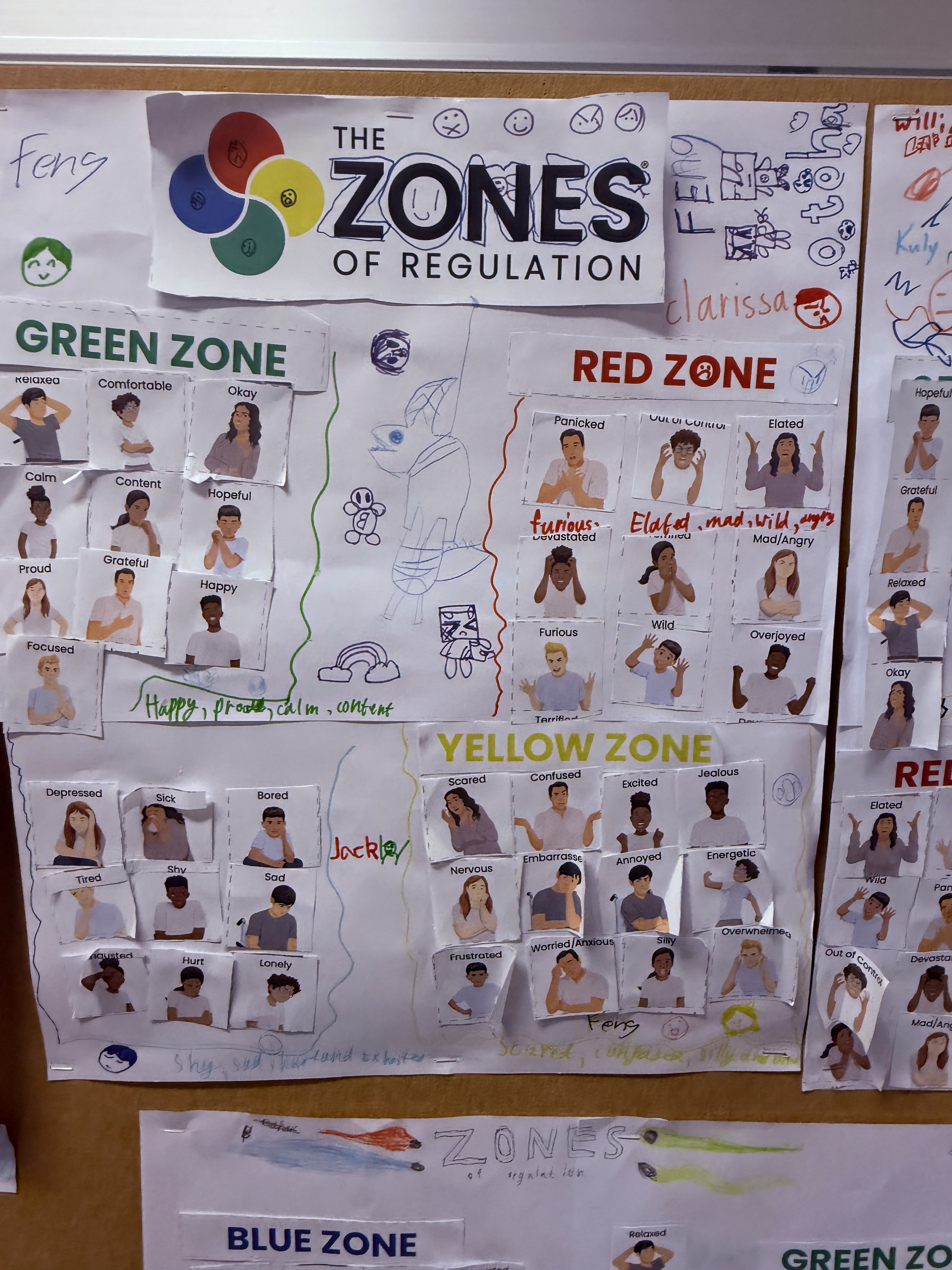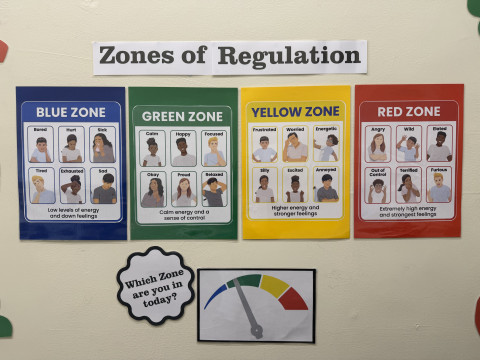Published 07 Aug 2025
Seeing, understanding and connecting with students – Carlton Gardens Primary School
School Wide Positive Behaviours
Nathan Gage – Principal
Carlton Gardens Primary School
Schools and early childhood services across Victoria continue to provide quality learning experiences across all levels. The VIT’s Professional Practice team is privileged to see this work firsthand on visits to workplaces around the state. Here is just one example spotlighting the great work happening in a Victorian primary school.
Nathan Gage is a primary school teacher and principal at Carlton Gardens Primary School (CGPS), a school in the heart of Melbourne that was established in 1884. CGPS has a culturally diverse community with at least 40 different language groups and many families who are new to Australia. We spoke to Nathan about how the school implemented a tiered support system to enable teachers and students to get the most out of their teaching and learning experience.
Can you tell us about your workplace and give some background to the development of your approach to the initiative?
Over many years, CGPS has grown and evolved with the changing needs of our students in a culturally diverse area.
We saw a need to strengthen our approach to supporting teachers and students through a tiered system. The three tiers represent different levels of support intensity and student needs
- Tier 1: focuses on universal, high-quality instruction for all students
- Tier 2: provides targeted interventions for some students who need additional support, and
- Tier 3: involves intensive, individualised interventions for students with significant learning or behavioural challenges.
Over the last 18 months, we have invested heavily in our wellbeing program, with school-based experts dedicating time around their areas of focus and looking at ways to support our staff and school to ensure we live by our key areas of wellbeing.
We have school leaders who work with teachers to build inclusive classrooms and practices, as well as respond to behaviours within the tier two and three spaces. We also implement behaviour support plans to help individual students as needed.
What inspired this change in your school?
We realised we needed a wider range of tier one skills to help address and support the diverse needs of our students through additional teaching and support. As a result, we have invested heavily in disability inclusion and positive behaviours to ensure all of our students have access to learning opportunities and social interactions.
Previously CGPS traditionally had a strong emphasis on academics which supported positive behaviours from our students, but our approach now focuses on creating consistent behaviours across the school to streamline how teachers respond, teach behaviours, or support students with stimulated learning.
Can you describe what the change entails, including any relevant background, research and / or evidence that helped develop your approach?
Our students highlighted concerns around engagement and stimulated learning. There was a gap between how our teachers were practicing and connecting with our students compared to what our students were feeling and experiencing. We looked at the elements of the Victorian teaching and learning model so we could create conditions that helped us understand our students better by
- seeing, understanding and connecting with them
- building strong relationships, and
- providing them with an environment to help them learn and engage.
We also ran professional learning for Positive Classroom Management Strategies (PCMS). This helped teachers think about how they could support students with different behaviours, attitudes and readiness to learn.
Our teachers worked with students on interest-based learning in a one-on-one or small group capacity. Research has indicated stronger teacher-student relationships result in a decrease of negative behaviours. Therefore, our interest-based learning sessions focus on building positive relationships. It has been effective and resulted in an uplift in behaviours.


What structural things are in place to ensure the approach has its best chance of success?
Our teachers have been given more autonomy to use their time in a way that's most impactful. We are looking to build something into our timetabling so teachers and Learning Support Officers can work with students on a reflect-and-restore process that helps struggling students in the classroom.
We have developed tools for our teachers to use when supporting our students. Providing opportunities and time for teachers in our approach is key. We know this can be an expensive exercise so we support this with designated professional learning sessions for all staff.
School leaders will be supporting teachers in the classroom over the next six months with
- looking at how teachers use their tool kits
- asking teachers questions and giving feedback
- noticing the big difference for the students who need support.
Having a behaviour flow chart around the school supports and encourages consistent practice. We also have ‘Reflect and Reconnect’ forms that teachers fill out with students when a restorative conversation is required. However, the process is more hands on to ensure we're building empathy for what's happened while also allowing teachers to teach or reteach the replacement behaviours to get the desired outcome. Importantly, this is also about shifting the narrative from managing behaviour to understanding the student.
Using this approach for tiers’ two and three help teachers understand patterns and trends in student behaviour. We don't make the student fit the box; instead, we make the box fit the student, making sure any adjustments help and track the behaviour.
We are building psychological safety and making our students feel happy, safe and calm at school as the first step before accessing their academic learning.
If a student is being recorded many times for the same poor behaviours, we move that student onto a behaviour frequency tracker, which is in 15-minute blocks, so it is quite intense. We have a three-week period of intense tracking of the behaviour. Depending on whether the student’s behaviour is improving or not, we use this system to facilitate discussions with staff on behaviour management strategies.
How has the approach built staff capability or contributed to the learning and development of staff?
We want teachers to have strong relationships with their students because it yields positive outcomes in their behaviour and learning. While this seems simple, it's not easy. Therefore, it’s important to understand where difficult behaviours are coming from and understand it from different angles.
We have noticed changes such as students calling their teacher by name, where previously they may have just walked past and ignored them. Similarly, students who didn't really want to have much to do with the teachers will now seek them out in the yard to chat. It has been a positive shift.
We have also seen a shift in the language teachers use. For example, instead of calling a behaviour “attention seeking”, we are now referring to it as “connection seeking”.
Does your school have any plans to build on the success of the approach?
We have goals to make the approach seamless and not time consuming for our teachers so they can extend and share the connection they've built with their students. To achieve this, we are finding ways to connect with families, making sure they know
- we see their children
- what we’re doing to help support their children
- understanding how their children approach learning and school.
Can you provide any additional relevant information?
As a result of different cultural upbringings, the student experience at CGPS differs depending on the cultural context of each students’ background. Some cultural groups do not believe focusing on wellbeing should be a school's priority and can be sensitive when it comes to this approach.
We work through this by meeting with parents regularly and explaining what we do. Engaging with the parent community allows us to continue doing this work in the wellbeing space. Sharing our approach also encourages a positive response from a community that previously was unresponsive.
CGPS has engaged with an Occupational Therapist (OT) on a consulting basis, who observes classrooms, looks at co-regulation, timetables, namely re-assesses environmental factors and highlights what works well. The OT recommends visual supports and encourages investment in this space.
In addition to our onsite Wellbeing Leadership team, we also work closely with our assigned Student Support Services team through the Department of Education (psychologist and speech pathologist), our Department of Education School Wide Positive Behaviour Support Coach and our Department of Education Koorie Engagement Support Officer. Their expertise strengthens and complements the work we are doing internally to support student wellbeing and engagement.

